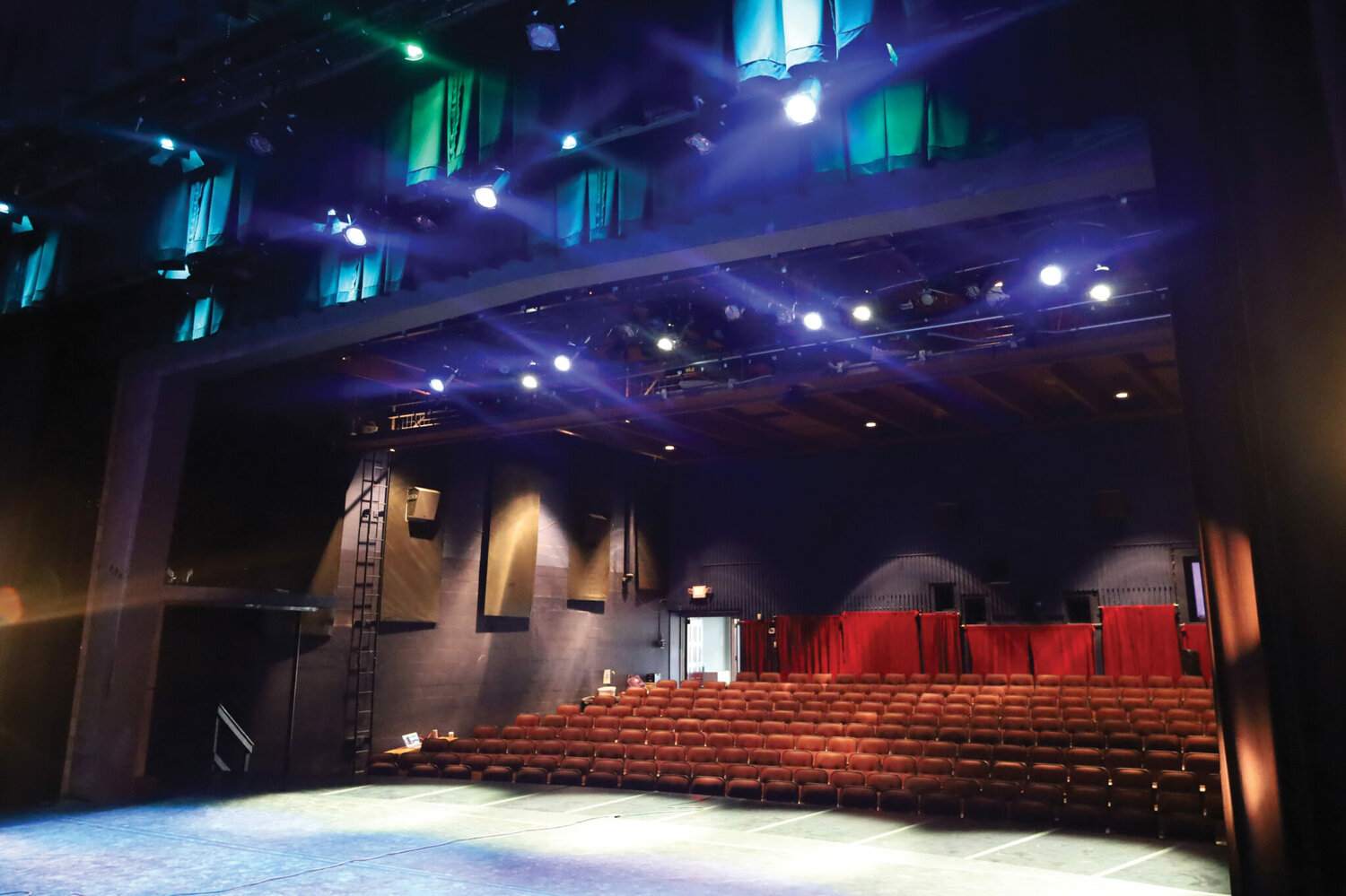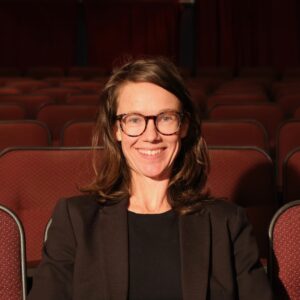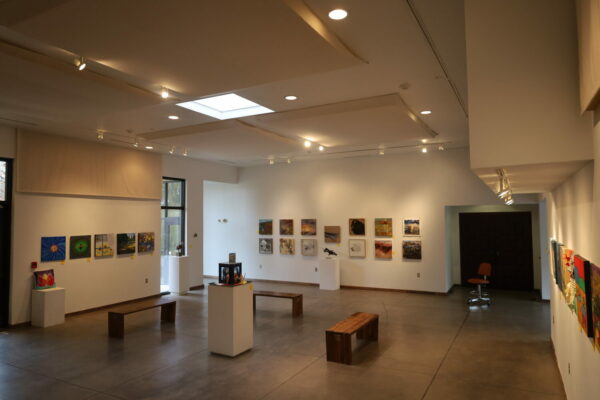Taos Center For The Arts
BY ELIZABETH BURNS

Chelsea Reidy arrived in Taos in 2016 for a short-term house-sit-ting gig, and like so many before her, she ended up staying. She was drawn into community theater, working backstage for Metta and then in 2018 for “Bye Bye Birdie” at the Taos Center for the Arts (TCA). This led to her first job at the center as a part-time projectionist and theater technician. She was promoted to theater manager and continued moving up the lad-der until she was named executive director two years ago. Reidy grew up a long way from Taos on the tiny island of Guam in the middle of the Pacific Ocean.
“It was an amazing experience. I had a very free childhood. My parents were of that hip-py scenario and idea so we were just kind of running wild … in the ocean all the time.” The family home was in a tropical forest, off the grid with an open living plan and an outdoor kitchen.

She attended the island’s public schools all the way through high school. After gradu-ating, she moved to Hawaii, where she at-tended community college and discovered she loved learning. She had always done well in school but sports — not academics — had been her focus. She’d played basket-ball, volleyball, tennis, soccer and excelled at them all. Now she wanted to know where she could get a good education without having to work threwe jobs to pay for it. On a visit to one of her brothers, who was studying in Maryland, Reidy and her mother went to Annapolis for lunch. As they passed an imposing Beaux-Arts building, Reidy was surprised to learn it was the U.S. Naval Academy.
“Let’s take a tour,” her mother suggested. While there, she learned two things: to get in, applicants had to play a sport and be good students, and tuition is free. Bingo! Reidy spent one year at the Naval Academy Prep School and two years at the Academy before deciding it was not what she wanted.

She returned to Guam to complete her studies earning a degree in interdisci-plinary studies in arts and science with a focus on science technology and the environment. She then spent four years teaching English in Japan. A couple of years traveling the U.S. doing everything from website design to painting and cleaning houses led to the fateful trip to Taos.
Reidy sees it as her role as executive director to support her colleagues to be successful in their jobs and, with guidance from the board of directors, to carry out the TCA’s mission “to inspire creativity and foster a thriving love for the arts.” What she enjoys most is work-ing with the TCA’s community partners and collaborators who are concerned about the well-being of Taos residents — the people who live here, grow up here, go to school here — and to understand how the arts contribute to that well-be-ing, how the arts could play a greater role in it and what adjustments need to be made to achieve that goal.


